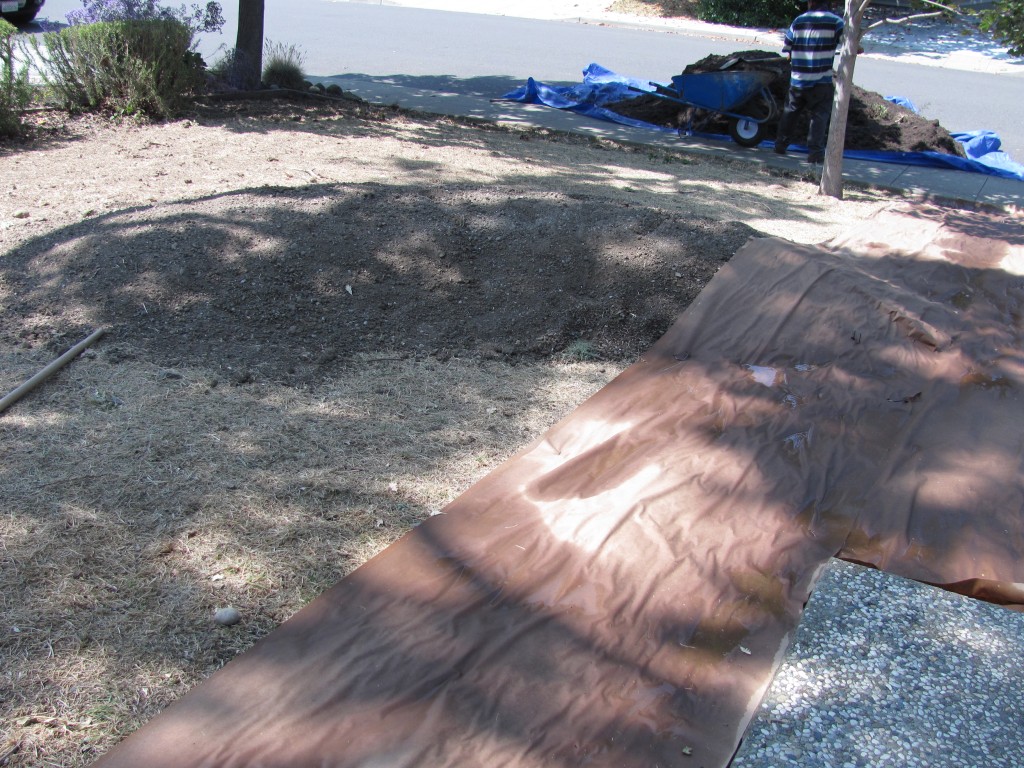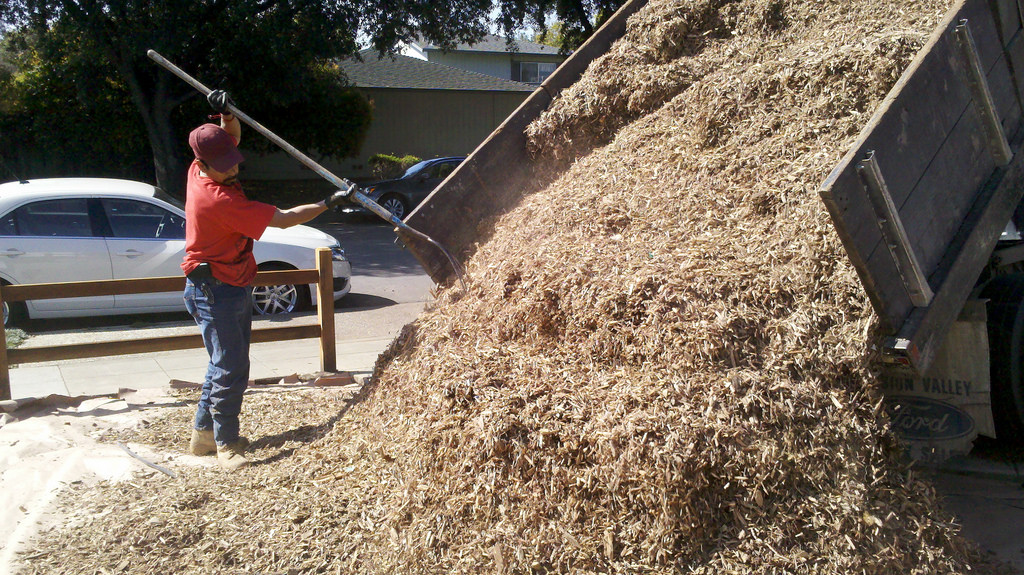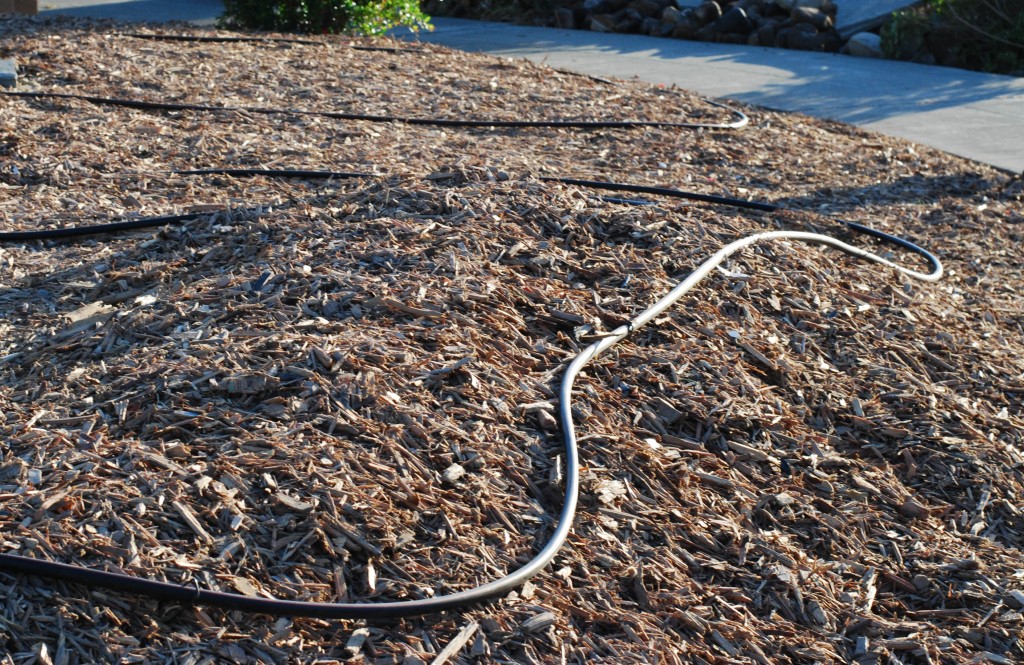Sheet Mulching
We begin the installation with a process called sheet mulching. This process will keep the grass and other weeds from receiving any sunlight, preventing them from growing back. Mulch also reduces the amount of water that is needed, protects the soil from heat and evaporation, and eventually breaks down and adds nutrients to the soil. In the end, it help to build soil health so that it is looser, it feeds your plants, and it absorbs and holds onto more water, reducing storm water run-off.
We begin by removing unwanted plants and hardscape and mowing down weeds. If there is Bermuda grass, we scalp it with a weed wacker, pick, or tiller.
Next, we dig a trench around the hardscape edges of the yard to make sure that the mulch doesn’t spill onto sidewalks and driveways. The trench is usually 6-8″ deep and wide, but can vary depending on the slope of the yard. The extra soil from the trench is spread throughout the middle area or used to create a natural looking mound.

Our next step is to completely cover the ground with newspapers, builder’s paper, or cardboard and a thick layer of arbor mulch.

Typically the first layer will be “arbor mulch” obtained from an arborist. It is later covered by a 1″ layer of decorative bark.

Now the area is ready for planting, which will be the focus of the next blog post. Stay tuned!